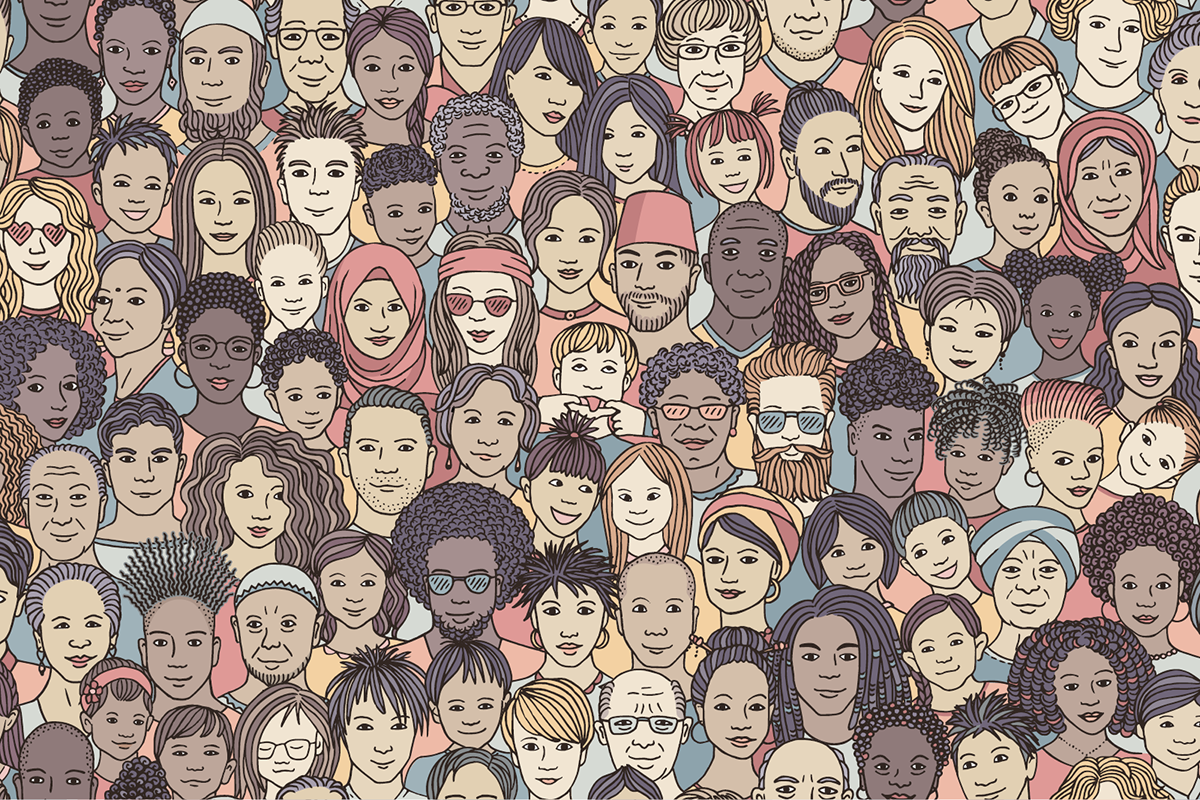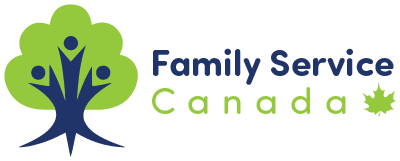The Complex Social Issues Facing Canadians
Family Service Canada member agencies respond to the issues that undermine family and individual well-being.
The issues explored below often intersect adding complexity and contributing to the challenge of resolving them. More than that, outdated social ideas often blame the victims and dismiss the impact. The resulting shame and stigma can make individuals less likely to reach out for support—deepening or prolonging the challenges.
The Impact is not Small
Those who face the issues below bear the immediate physical, mental, and emotional costs. And there are almost certainly more Canadians directly affected than we know. But the costs of these issues extend to every Canadian.
There are government and system costs associated with support, and the affected individuals are typically less able to participate in the workforce and economy. The research highlighted below shows that failing to respond caries a staggering cost to businesses, institutions, and the economy. As community-based social service agencies our task is twofold:
- To support the families who face these issues directly; and
- To help Canadians understand the significant impact and cost of leaving these issues unaddressed.
To learn more about how our members respond, visit their websites. You’ll find links on our Current Members page.

Jump to an Issue
Poverty
“The condition of a person who is deprived of the resources, means, choices and power necessary to acquire and maintain a basic level of living standards and to facilitate integration and participation in society.”
- Government of Canada
Canadians in Poverty
In 2018, 3.2 million Canadians or 8.7% of the population lived in poverty.
Canadians in Deep Poverty
1.7 million Canadians or 4.6% of the total population lived in deep poverty—having disposable income below 75% of Canada’s Official Poverty Line.
Why it Matters
Poverty affects community strength and resilience. People living in poverty are more likely to face health issues, have difficulty finding and keeping a job, find themselves in the criminal justice system, and need various social supports.
Identifying the social cost of poverty is notoriously tricky. The impact is spread across our criminal justice, health, social support systems, and every level of government. Beyond that, there are economic costs: families without money cannot buy products or services.
 In 2008, Feed Ontario (the Ontario Association of Food Banks) attempted to estimate the poverty cost in Ontario. They estimated the social costs for the province at $10.4 to $13.1 billion per year. The estimated cost of families unable to participate in the economy an additional $32 to $38 billion—just for Ontario.
In 2008, Feed Ontario (the Ontario Association of Food Banks) attempted to estimate the poverty cost in Ontario. They estimated the social costs for the province at $10.4 to $13.1 billion per year. The estimated cost of families unable to participate in the economy an additional $32 to $38 billion—just for Ontario.
Family Violence
Family violence describes any form of abuse, mistreatment, or neglect that a child or adult experiences from a family member, or from someone with whom they have an intimate relationship.
Victims of police-reported violent crime
In 2016, one‑quarter (26%) of all victims of violent crime had been victimized by a family member.
Female Victims of Family Violence
While women and girls made up just over half (52%) of violent crime victims overall, two‑thirds (67%) of family violence victims were female.
The known rate of family violence is likely underestimated.
Self‑reported data from the 2014 General Social Survey on Canadians’ Safety (Victimization) show that 70% of victims of spousal violence and 93% of victims of childhood physical and/or sexual abuse never spoke to authorities about their experiences.
Why it Matters
Family violence can cause a range of short and long-term health issues, including physical, mental, cognitive, and behavioural challenges. It can contribute to poverty, housing instability, and school failure, but individuals who experience these conditions are also at greater risk for intimate violence.
Beyond the personal costs, family violence has implications for our health and justice systems, employers, businesses, as well as social and community services. Like poverty, the total cost is difficult to calculate. A study completed in 2012 suggested $7.4 billion per year. The authors cautioned that value was underestimated because of data availability and the under-reporting of family violence.
Mental Health Issues & Addictions
Mental health and well-being affect every aspect of life, including our ability to engage with and contribute to our families and communities. Disorders affect mood, thinking, and behaviour, including depression and anxiety, substance abuse disorders and process addictions like gambling.
Canadian Mental Health1
Why it Matters
Mental illness is estimated to take 10 to 20 years off an individual’s life expectancy. As of 2016, an average of 10 Canadians die by suicide each day. It’s the second leading cause of death for Canadians 10 to 29 years of age.
 Mental illness is also a leading cause of disability in Canada. A RiskAnalytica study estimated the cost of mental illness to the Canadian economy was over $42.3 billion in 2011. The report cautioned the estimate was low. Additionally, the study didn’t include the cost to the justice system, social service and education systems, costs for child and youth services, informal caregiving costs or costs attributable to losses in health-related quality of life.
Mental illness is also a leading cause of disability in Canada. A RiskAnalytica study estimated the cost of mental illness to the Canadian economy was over $42.3 billion in 2011. The report cautioned the estimate was low. Additionally, the study didn’t include the cost to the justice system, social service and education systems, costs for child and youth services, informal caregiving costs or costs attributable to losses in health-related quality of life.
Racism
Racism is the belief that a particular race is superior or inferior to another and, based on that, actively or passively supports discrimination, prejudice and violence against another person.
Canadian Ancestry
On the 2016 census, Canadians reported over 250 ethnic origins or ancestries.
Hate Crimes Motivated by Ethnicity
Forty-four percent of police-reported hate crimes in 2018 were motivated by race or ethnicity.
Why it Matters
In 2018, police reported 1,798 criminal incidents in Canada motivated by hate, which is not exclusive to racism. As with other topics on this page the data is incomplete. As a comparison, the 2014 General Social Survey on Canadian's Safety, Canadians self-reported over 330,000 hate-motivated criminal incidents in the year leading up to the survey. Two-thirds of these incidents were never reported to the police.
Racism has clear, and sometimes deadly consequences for Canadians. It also has costs to our justice system and hinders our economy and exacerbates poverty. Racialized Canadians earn, on average, 81 cents to the dollar compared to other Canadians. Employers are also about 40% more likely to interview a job applicant with an English-sounding name despite identical education, skills, and experience.
These impacts become more significant when race intersects with other targeted identities, such as gender and sexual orientation.
Social Exclusion
Social exclusion is a denial of belonging or recognition. The intent is to keep people and communities distanced from centres of power and resources. It leaves people economically and socially vulnerable.
Why it Matters
Social exclusion is usually driven by greed and prejudice. Excluding others ensures your group has access to more of the resources you want with limited competition. A social understanding of exclusion is relatively new, and we lack statistical data on its pervasiveness, but Canadians are becoming more aware of it.
Racism can be the basis for social exclusion. The anti-racism protests in 2020 called for changes to policy that disproportionately disadvantaged people of colour, especially related to the justice system. The policies they pointed to are a form of social exclusion.
 Without access to resources, individuals fall into poverty, which contributes to poor physical, mental, and emotional health, family violence, addictions and substance abuse. Additionally, without equal access to centres of power, those who have been excluded have no ability to advocate for change through official systems and structures. Activism, protest, and social unrest are seen to be the tools available to them.
Without access to resources, individuals fall into poverty, which contributes to poor physical, mental, and emotional health, family violence, addictions and substance abuse. Additionally, without equal access to centres of power, those who have been excluded have no ability to advocate for change through official systems and structures. Activism, protest, and social unrest are seen to be the tools available to them.

